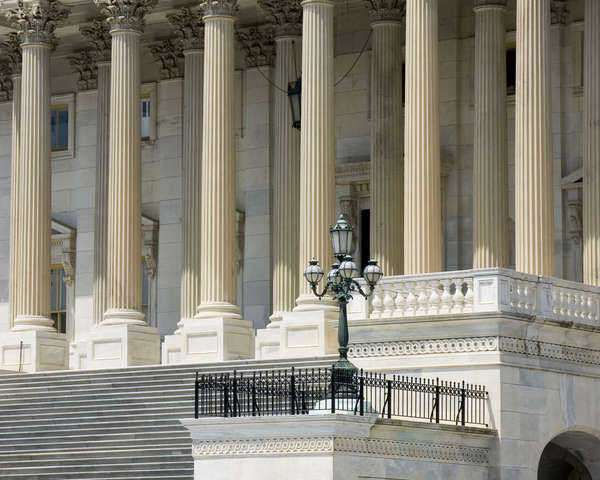Table of Contents
- 0.1 The 3rd Amendment
- 0.1.1 Influence on The United States
- 0.1.2 Conclusion
- 0.1.3 What is the Third Amendment?
- 0.1.4 The Third Amendment Defined:
- 0.1.5 Stipulations of the 3rd Amendment:
- 0.1.6 How was the 3rd Amendment Created?
- 0.1.7 Court Cases tied into the 3rd Amendment
- 0.1.8 State Timeline for Ratification of the Bill of Rights
- 1 3rd Amendment in 2024

The 3rd Amendment
The Third Amendment to the United States Constitution is often overlooked compared to the more famous First and Second Amendments. Nonetheless, it remains a significant part of the Bill of Rights, which guarantees individual liberties and limits the power of the government. The Third Amendment prohibits the quartering of soldiers in private homes without the consent of the homeowner, a protection that has helped to promote the privacy and sanctity of the American home.
The Third Amendment was adopted in 1791, as part of the Bill of Rights. It was intended to respond to colonial grievances against the British Army, particularly during the Revolutionary War. British troops often occupied private homes, placing a significant burden on homeowners, as well as violating their privacy and freedom.
The Third Amendment essentially serves to protect the privacy and sanctity of the American home. It ensures that homeowners have control over who enters their property, and that the government cannot infringe on this right without their consent. This is an essential principle in American society, as it promotes individual liberty and property rights.
Moreover, the Third Amendment serves as a protection against unjust government power. It prohibits the military from using private homes as barracks, which could lead to the violation of individual rights or the abuse of power. This right has remained important throughout American history, as it has served as a safeguard against the potential for a tyrannical government.
Influence on The United States
Although the Third Amendment has been largely symbolic in terms of direct relevance to the current day, it has had indirect impacts on the United States. By protecting property rights, it has enabled Americans to be more secure in their homes and has allowed them greater control over who enters their property. This principle has helped to create a sense of privacy and autonomy in American-made homes.
In addition, the Third Amendment has proven to be an element of public discourse, particularly in the context of recent political debates over civil liberties and surveillance. The principles it enshrines, such as privacy and property rights, have been invoked in debates over government surveillance programs, which many believe are an infringement of civil liberties. This has helped to reaffirm the importance of the Constitution and its principles of individual liberty and limited government power.
Another indirect impact of the Third Amendment has been on the development of American democracy. The amendment, along with other protections in the Bill of Rights, has helped to establish a system of government in which individual rights are protected and government power is limited. These principles have allowed for the continued evolution of American democracy, promoting a culture of free expression, individual rights, and accountability in government.
Conclusion
Finally, the Third Amendment has served as a symbolic reminder of the values and principles that underpin American democracy. Its protection of the sanctity of private property influenced generations of Americans over time to understand the importance of individual rights and limited government. The Third Amendment, along with the rest of the Bill of Rights, has contributed to the unique character of American society that has made it a beacon of freedom and liberty in the world.
In conclusion, the Third Amendment may be seen as an often-overlooked part of the Bill of Rights, however, it has had an important role in protecting individual liberties and promoting limited government power. It has created a culture of individual rights, privacy, and sanctity of property that has helped to create a democratic society in the United States. Despite the fact that it does not have a direct relationship to contemporary politics, it remains a key symbol of American democracy and the principles that underlie it, and is worthy of attention and consideration.
Third Amendment: The Quartering of Soldiers
What is the Third Amendment?
No Soldier shall, in time of peace be quartered in any house, without the consent of the Owner, nor in time of war, but in a manner to be prescribed by law.
The Third Amendment Defined:
The Third Amendment is a part of the Bill of Rights, which are the first 10 Amendments to the United States Constitution and the framework to elucidate upon the freedoms of the individual. The Bill of Rights was proposed and sent to the states by the first session of the First Congress. They were later ratified on December 15, 1791. The Third Amendment was introduced on September 5, 1789.
The first 10 Amendments to the United States Constitution were introduced by James Madison as a series of legislative articles and came into effect as Constitutional Amendments following the process of ratification by three-fourths of the States on December 15, 1791.
Stipulations of the 3rd Amendment:
The Third Amendment prohibits, during times of peace, the quartering of soldiers on private property and in private homes without the consent of the owner. The Third Amendment makes the quartering of soldiers permissible only in times of conflict or war and then only according to the area’s particular laws.
The Third Amendment is routinely regarded as one of the least cited sections of the United States Constitution. The reasoning behind this notion or lack of use stems from the obsolete nature of the passage—rarely in modern times are soldiers quartered in private homes. That being said, the Amendment is occasionally cited as a base for the right to privacy.
How was the 3rd Amendment Created?
The original constitution was met with skepticism due to the lack of civil liberties. In response, the bill of Rights was created to include the 3rd Amendment along with the rest of the Bill of Rights. Numerous revisions were drafted to better elucidate upon the distinction between times of war and times of peace and whether the executive or the legislative branch of government would possess the power to authorize quartering.
Court Cases tied into the 3rd Amendment
In Youngstown Sheet & Tube Co. v. Sawyer, the court ruled that the framers of the Constitution intended to constrain executive power even during times of war. The court ruled that military powers of the executive branch were not meant to supersede representative government of internal affairs.
State Timeline for Ratification of the Bill of Rights
New Jersey: November 20, 1789; rejected article II
Maryland: December 19, 1789; approved all
North Carolina: December 22, 1789; approved all
South Carolina: January 19, 1790; approved all
New Hampshire: January 25, 1790; rejected article II
Delaware: January 28, 1790; rejected article I
New York: February 27, 1790; rejected article II
Pennsylvania: March 10, 1790; rejected article II
Rhode Island: June 7, 1790; rejected article II
Vermont: November 3, 1791; approved all
Virginia: December 15, 1791; approved all
3rd Amendment in 2024
The 3rd amendment is a lesser-known part of the United States Constitution that prohibits the quartering of soldiers in private homes during times of peace without the homeowner’s consent. It was included as a response to the British soldiers forcing Americans to house them during colonial times, and it reflects the Founding Fathers’ concern for individual privacy and property rights.
But how does the 3rd amendment continue to affect Americans in 2024? One possible way is through the increasing use of technology and surveillance by the government. As new technologies emerge, there is a growing need to regulate how they are used to protect individual rights, including privacy and security.
One example of how the 3rd amendment could be relevant in the future is through the use of drones for surveillance by law enforcement agencies. Drones are unmanned aerial vehicles that can be equipped with cameras and other sensors, allowing them to gather information about subjects without their knowledge. As drones become more advanced and affordable, some experts predict that they will become an increasingly popular tool for law enforcement.
However, this increased use of drones raises concerns about privacy violations and the government’s power to conduct warrantless surveillance. If law enforcement agencies were to deploy drones to surveil citizens in their homes without their consent, it could be seen as a violation of the 3rd amendment’s protection of private property and individual rights.
Another area where the 3rd amendment could become relevant in 2024 is in the debate over the use of private security contractors in conflict zones. In recent decades, the US military has increasingly relied on private contractors to provide logistical support and security in conflict zones. These contractors are often not subject to the same regulations and oversight as military personnel, leading to concerns about their conduct and accountability.
If private security contractors were to be deployed to provide security within US borders, it could be seen as a violation of the 3rd amendment. This is because the amendment prohibits the quartering of soldiers, which historically included both military personnel and civilian contractors. Critics argue that the use of private contractors effectively circumvents the 3rd amendment’s protections, as private contractors are not considered soldiers under the law.
Another potential area where the 3rd amendment could be relevant is through debates over government surveillance and data mining. In recent years, there has been growing concern over the government’s use of technology to collect and analyze data about citizens’ activities, including their online behavior, travel patterns, and financial transactions. Critics argue that this kind of surveillance violates individual privacy and could be used to target individuals based on their political beliefs or other attributes.
If government agencies were to use private residences or businesses to host surveillance equipment without the owner’s consent, it could be seen as a violation of the 3rd amendment. The amendment’s prohibition against quartering soldiers in private homes without consent could be interpreted to extend to government surveillance equipment, especially if the equipment is being used to monitor private activities.
Overall, the 3rd amendment may seem like an outdated relic of colonial times, but it remains an essential piece of the US Constitution. Its protections for individual privacy and property rights continue to be relevant in the modern world, especially as new technologies and security threats emerge. While the 3rd amendment may not be as frequently cited as other amendments, including the 1st and 2nd amendments, its principles provide a foundation for protecting the rights of citizens in times of peace and conflict.

























